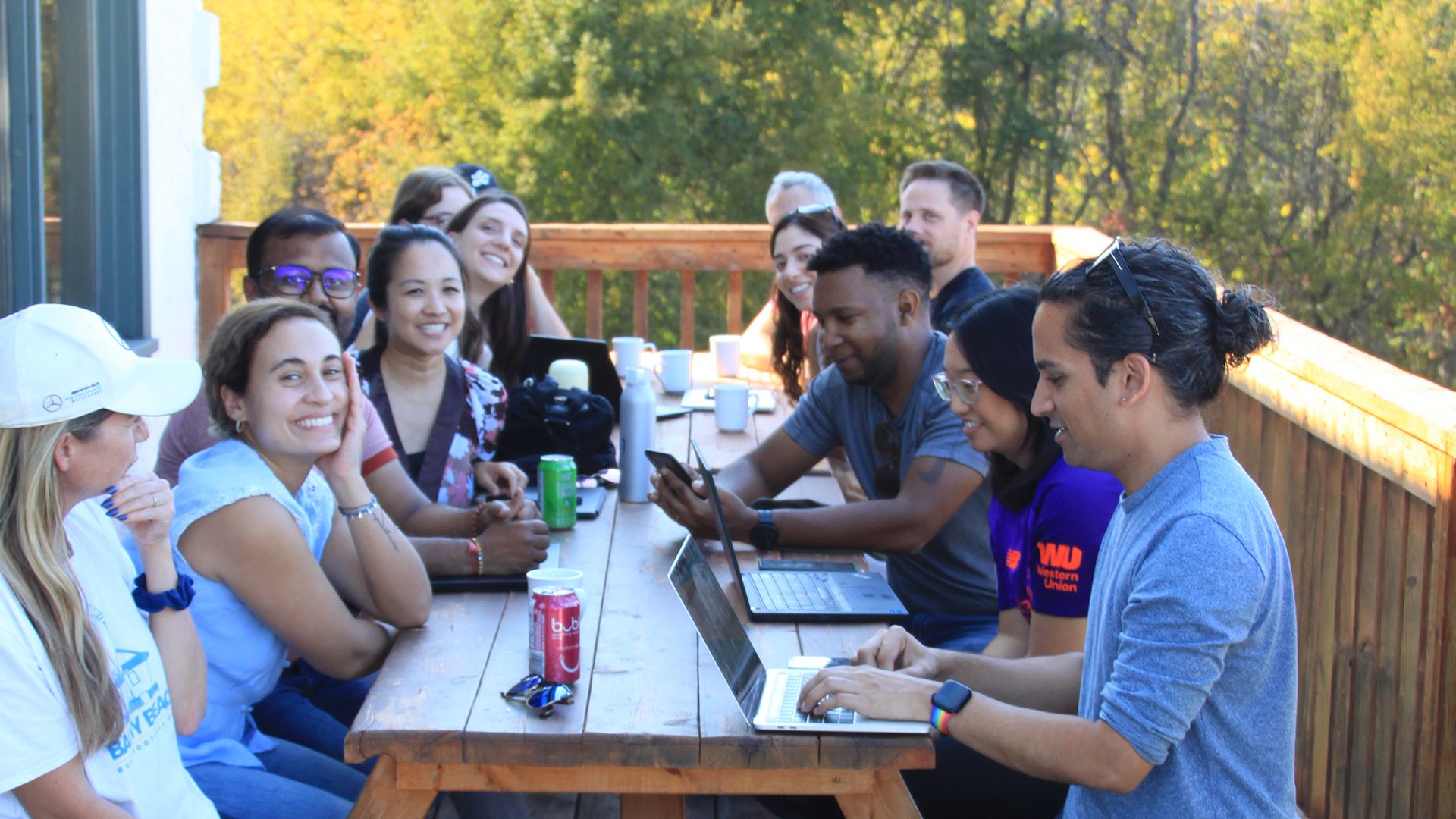When we talk about research, we often emphasize its scientific nature—data collection, analysis, and replicability. Research is typically framed as an exact process, rooted in precision and objective truths. While all of this is essential, there’s an equally important side of research that we don’t talk about as often: the art of it—asking creative and insightful questions that make respondents pause and think critically, interpreting contradictory findings, and understanding the nuance in human behavior that the data alone may not reveal. I believe that good and meaningful research is more than just science—it’s part art, part science.
With October being ADHD Awareness Month, I’ve been reflecting on my own journey. Like many people with ADHD, I wasn’t diagnosed until adulthood, and that diagnosis made so many of my childhood experiences suddenly make sense. It was a moment of clarity, but it also brought up a lot of emotions. I thought back to all the times I struggled to focus in school, the endless feeling of being “different” but not understanding why. Like so many others, I spent years navigating life without knowing that ADHD was the cause of those challenges. Without that understanding, you’re often left feeling like you’re constantly falling short or missing something. Now with many years of therapy and medication to help, I can look back and now see that the way my brain works wasn’t something to be fixed—it was simply different.
My Experience With ADHD as a Researcher
Growing up, I would have never guessed that I’d end up in a career in research. When most people think of a researcher, they likely imagine someone who is meticulous and highly detail oriented. Those who know me would not exactly describe me that way.
With ADHD, my thought process often leads me to focus on big-picture ideas and connections, rather than the tiny specifics. I tend to follow my curiosity, which sometimes means taking unconventional paths or generating a larger number of possible solutions at once. Thanks to my ability to think divergently, I naturally connect ideas that may seem unrelated to others, allowing me to approach problems from unique angles.
While this non-linear way of thinking can feel chaotic at times, and traditional structures or timelines can feel restrictive, it’s what allows me to see the bigger picture and find innovative answers that a more structured process might miss. I may lose track of smaller tasks while hyper-focusing on a concept that sparks my interest, but this also helps me explore multiple solutions before settling on the one that truly fits.
This month, as I reflect on ADHD, I’ve realized that not only do I approach research differently, but my unique approach is also what my clients recognize as a strength. I like to think of research as a blend of art and science, which makes the process more creative, dynamic, and impactful. This month, as I reflect on ADHD, I’ve realized that not only do I approach research differently, but my unique approach is also what my clients recognize as a strength. I like to think of research as a blend of art and science, which makes the process more creative, dynamic, and impactful.”
Rethinking What a Researcher Can Be
For many with ADHD, the challenges are real. Focus can be elusive, distractions are common, and time management can be tricky. We might not always notice the small details that others catch, or we may struggle to stay on one track for long. These traits are often seen as challenges in a profession that traditionally values meticulous attention to detail. But what I’ve come to understand is that these differences also allow me to think creatively and see angles others might not.
I naturally think broadly—about systems, patterns, and the overarching narratives behind the data. This allows me to connect ideas across seemingly unrelated areas and ask questions that dig deeper into the “why” behind behaviors — one of the reasons I was so drawn to Environics Research’s Social Values System. It’s a way of thinking that embraces the art of research: the creativity and interpretive skills that help to bring meaning to—and derive guidance from—the quantitative, scientific side.
This approach embraces the art of research, where creativity and interpretation help bring meaning to the quantitative side. It’s about understanding not just what the data shows, but the story it’s telling—and how that story can be used to derive insights that guide decision-making. This balance between artistic interpretation and scientific rigor is, I believe, where the most impactful research happens.
The Art In Research
Research, at its best, isn’t just about collecting data; it’s about understanding where that data leads, uncovering patterns, and telling a story that informs decisions. As we look to the future of research with the rise of AI, many foundational tasks of research will eventually become automated. While AI is incredibly powerful, it’s only as effective as the questions we ask of it. The same is true for research itself—its value lies not just in the data collected, but in how we craft the questions and explore creative ways to reveal insights that haven’t been uncovered before.
My ADHD allows me to ask creative, thought-provoking questions—not just to study participants but to my clients as well—encouraging them to view challenges through a different lens. I enjoy surprising people with questions that reframe problems and push them to think differently. I also don’t always believe that a survey or focus group is the best solution to every research problem. While I might not always dive into the smallest details, I have a talent for identifying new, unconventional ways to tackle challenges. I’m not afraid to take alternative routes to find meaningful answers. That’s where the creative power of ADHD truly shines—helping me step back, see the bigger picture, and uncover connections others might overlook.
The Science: Support Systems Make It Possible
This is not to say that there aren’t real challenges to navigating research with ADHD—there are. That’s where my amazing team and colleagues come in. Over the years, I’ve built a team that complements my strengths and fills in where I may not be as strong. I’m so grateful for their work because they excel at managing details, keeping things organized, and ensuring nothing gets missed. While I tend to bring the big-picture thinking and creative exploration, they focus on structuring the work, ensuring our research is solid, reliable, and actionable.
This balance between me and my team is what makes our work special. Together, we’re a perfect combination of art and science. They know my challenges and value the unique perspectives I bring, just as I value the clarity and focus they bring to the table. It’s a mutually supportive dynamic that allows us all to do our best work.
ADHD as a Strength, Not a Limitation
I believe the intersection of rigour and creativity in research is where true innovation happens. It’s in this space that we push beyond the basics and uncover insights that can truly make an impact. As research continues to evolve—whether it’s incorporating AI or embracing neurodiversity—it’s important to remember that nimble thinking and creative interpretation are just as essential as precise data collection and analysis.
This ADHD Awareness Month has helped me realize how much my ADHD has shaped my work and how it’s been a strength, not a limitation. I’ve built my career around seeing the big picture, asking creative questions, and using research as a tool for innovation and insight. Even more, I’ve learned the importance of surrounding myself with people who recognize my strengths, support me through challenges, and bring their own distinct strengths so we can collectively deliver the most meaningful insights to our clients.
As we reflect on ADHD Awareness Month, I hope we all take a moment to appreciate how different ways of thinking enhance the work we do. Whether in research, business, or everyday life, creativity isn’t just a bonus—it’s essential. By embracing both the art and science of what we do, we can create something far greater than the sum of its parts.
And finally, to my fellow ADHDers: Your brain brings a unique way of thinking to everything you do, whether it’s in problem-solving, creativity, or seeing the world from a new perspective. The things that make you feel different are the very things that make you powerful. I hope that you too can take some time to reflect on how your ADHD allows you to approach your work in ways others may not and take pride in it. You have something special to offer and I hope that this reflection offers you inspiration to be proud of the way your brain works, and let it shine in everything you do.





